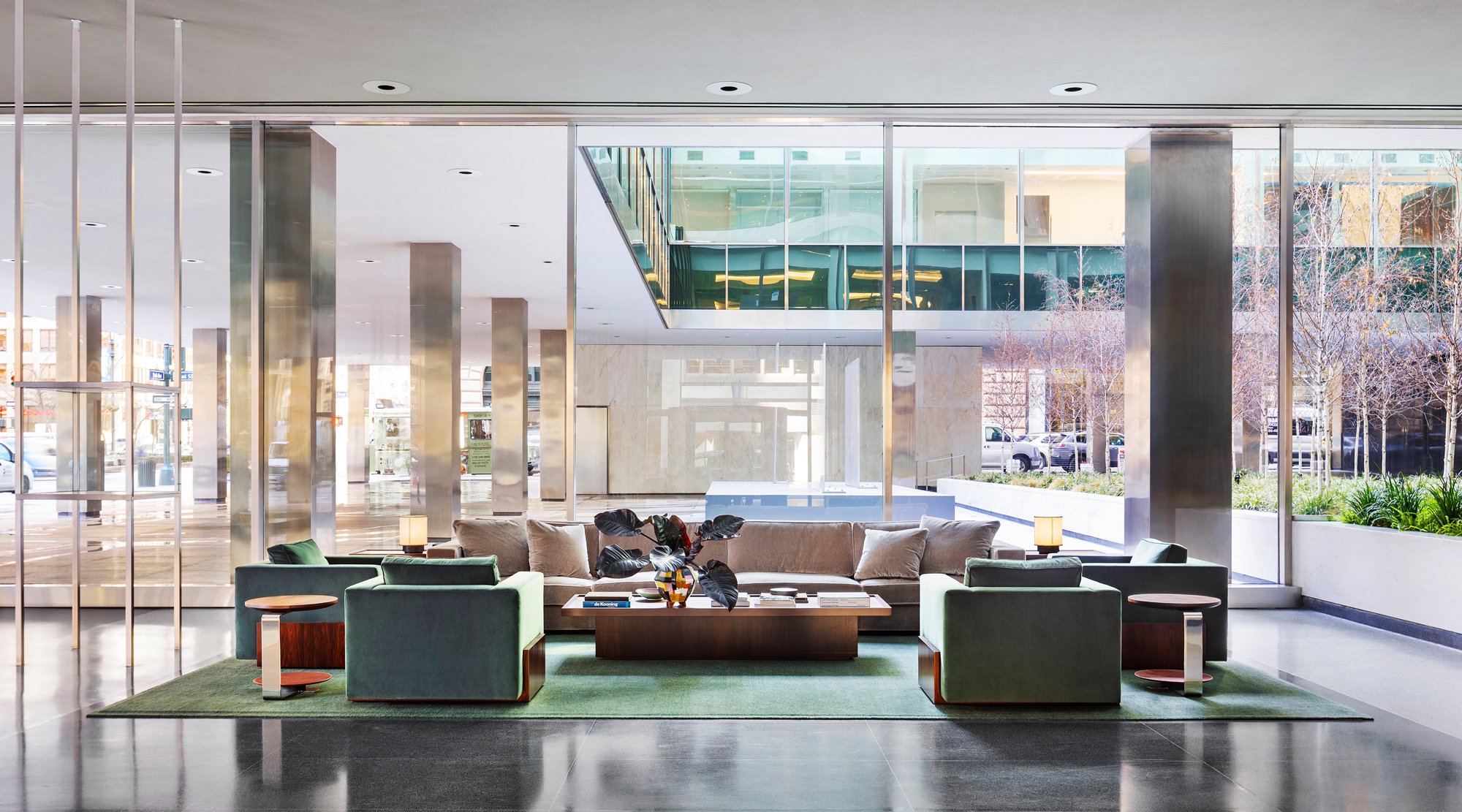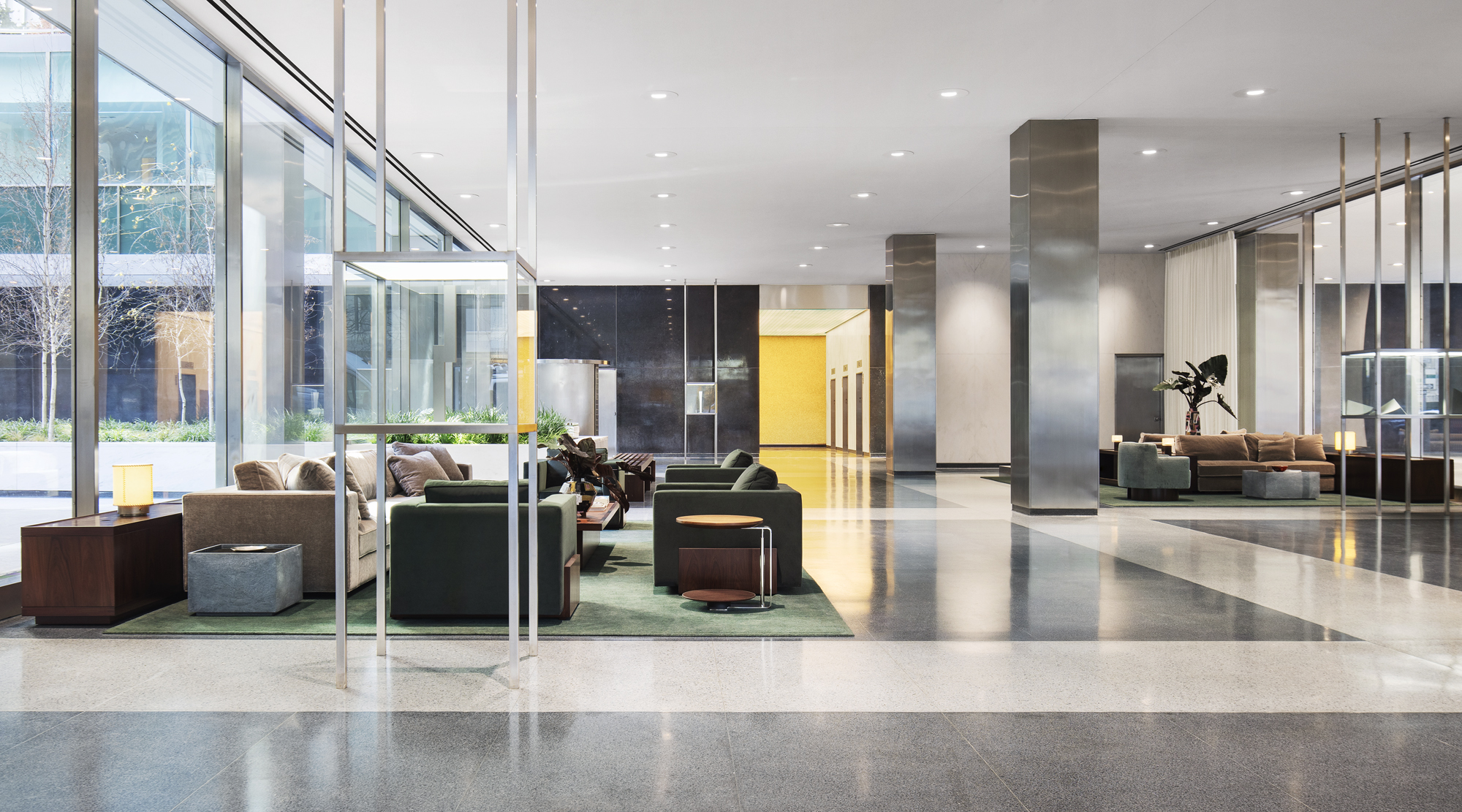A Landmark Reimagined by Marmol Radziner
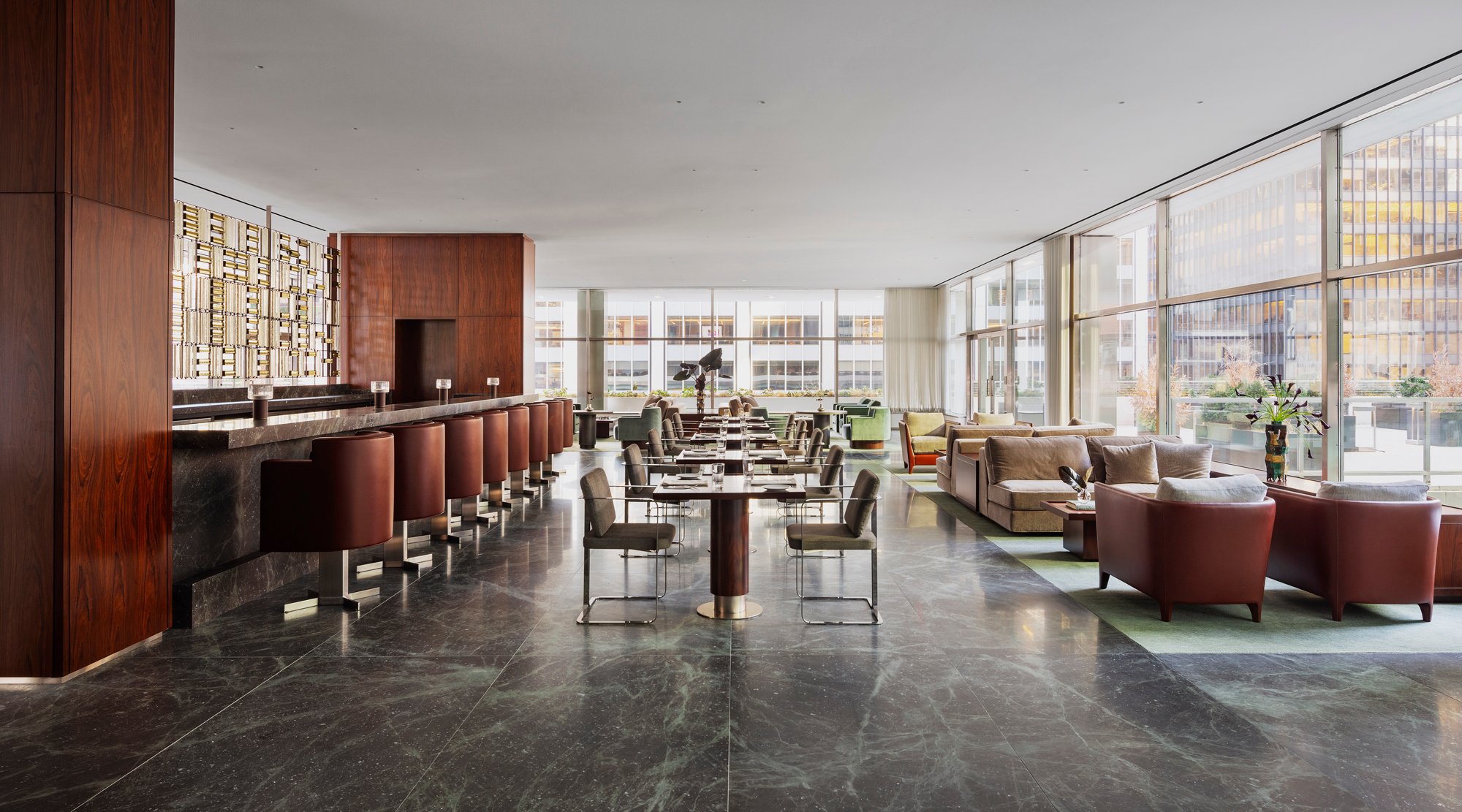
All photos by Scott Frances
In reinventing the amenity spaces of Lever Club within one of New York’s most iconic modernist landmarks, Marmol Radziner approached the project with both reverence and restraint.
Few buildings capture the spirit of New York modernism quite like Lever House. Completed in 1952 by Skidmore, Owings & Merrill, the shimmering glass tower was a radical departure from the masonry-clad office blocks that defined Midtown Manhattan at the time, and it remains an enduring symbol of architectural innovation. More than 70 years later, the challenge of honoring that legacy while adapting the interiors to meet contemporary needs fell to Marmol Radziner, a firm renowned for its sensitive balance of preservation and reinvention.
In redesigning the amenity spaces of the Lever Club within this iconic modernist landmark, Marmol Radziner approached the project with both reverence and restraint. The result is a seamless dialogue between past and present.
Here, design partner Ron Radziner shares how the firm brought the transformation to life.
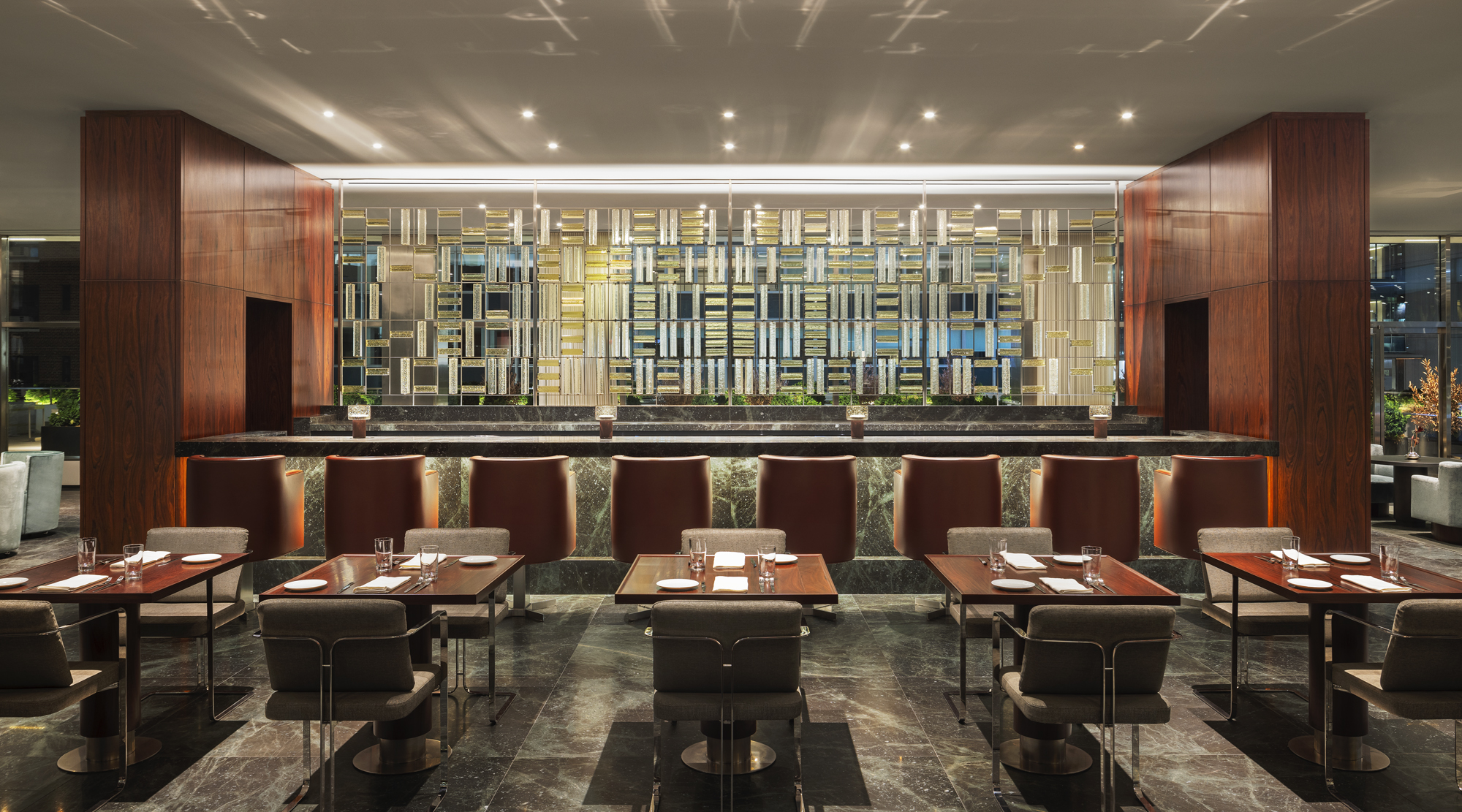
“Lever Club pays homage to the building's rich history, the design is a sympathetic insertion within Lever House’s iconic glass facade. The third floor, which currently houses the private club, had fallen into disrepair after various alterations and had to be completely reimagined.
“We referenced Skidmore Owings & Merrill partner Gordon Bunshaft’s personal residence to design the amenity spaces as inviting suites. Plush textures and rich tones, most often seen in a residential setting, soften the hard edges of the architecture.
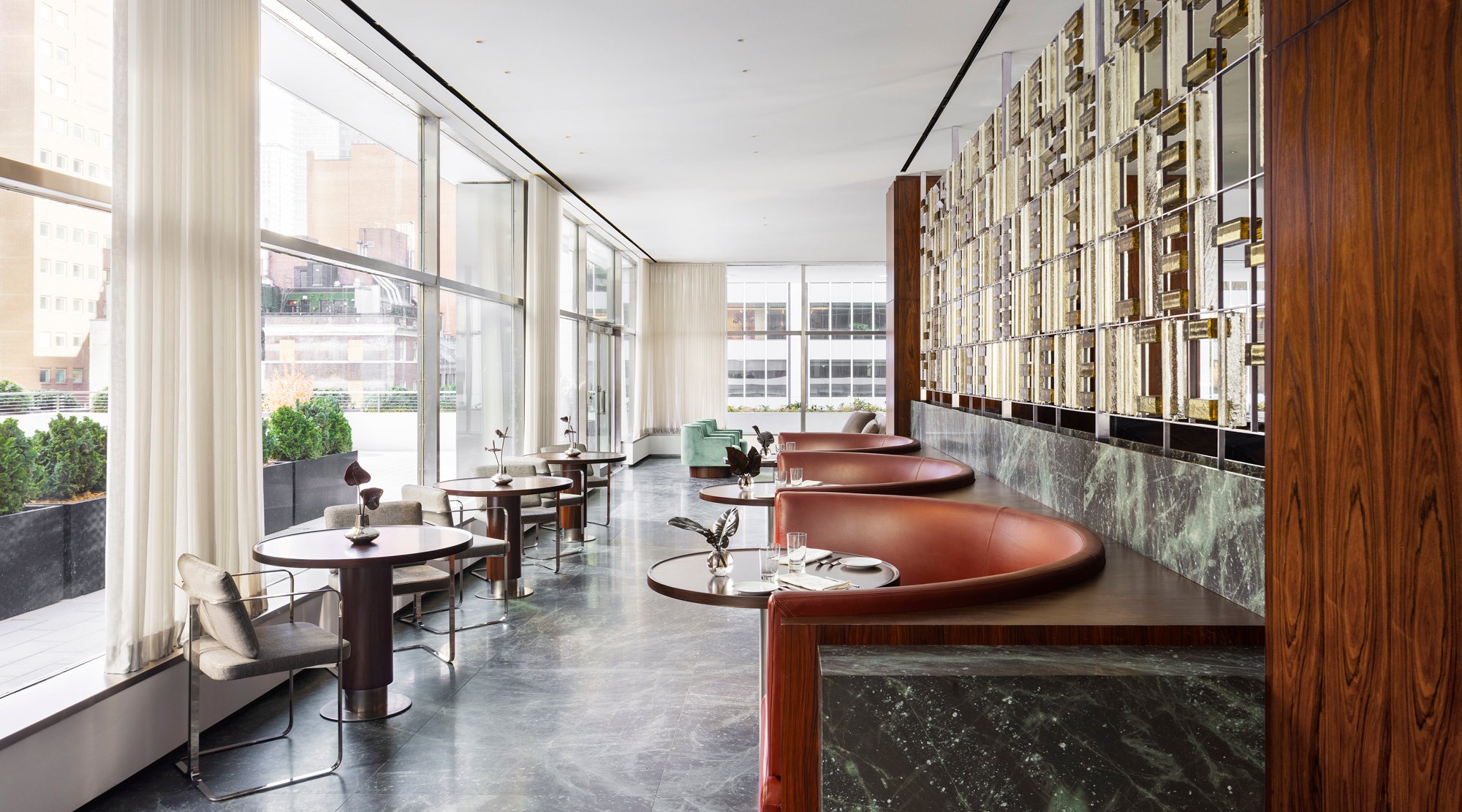
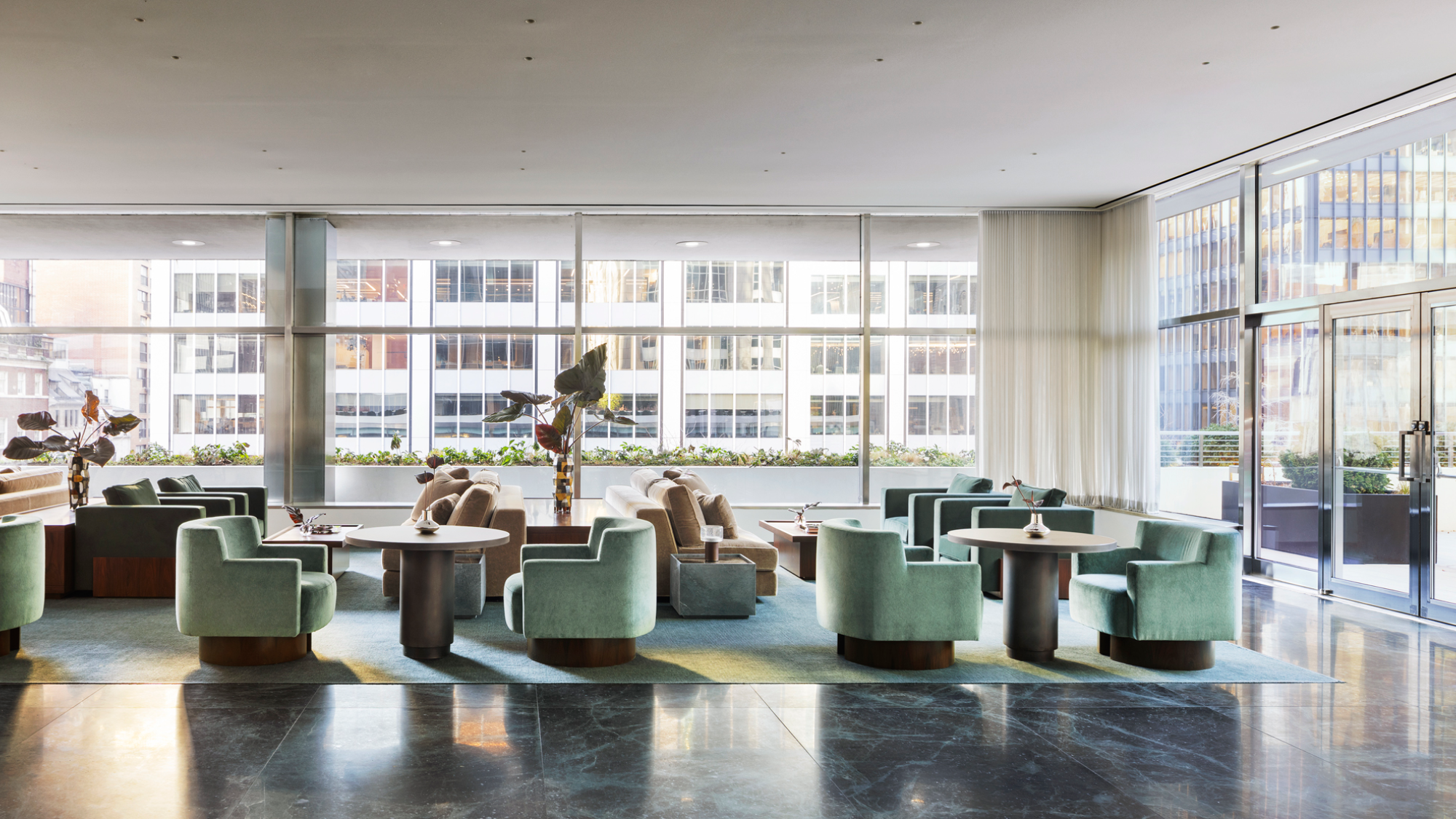
“Most of the furniture in the bar and lounge areas are custom designs inspired by the building’s architectural elements and were handcrafted by our metal and wood shops in El Segundo, California. The green hues of Lever Club's pioneering façade are reflected in the marble flooring, carpets, and upholstered seating. The slender window mullions of the building inspired the proportions and design of the aluminum bases for the lounge's dining tables and chairs."
